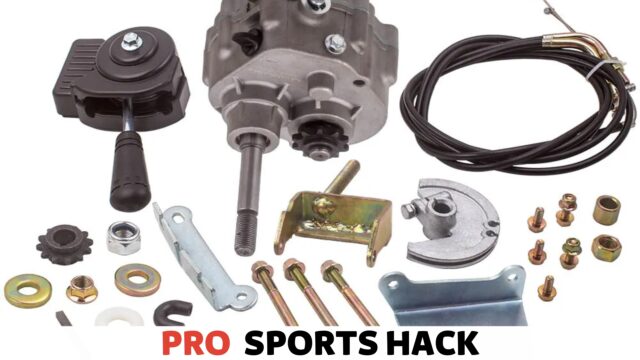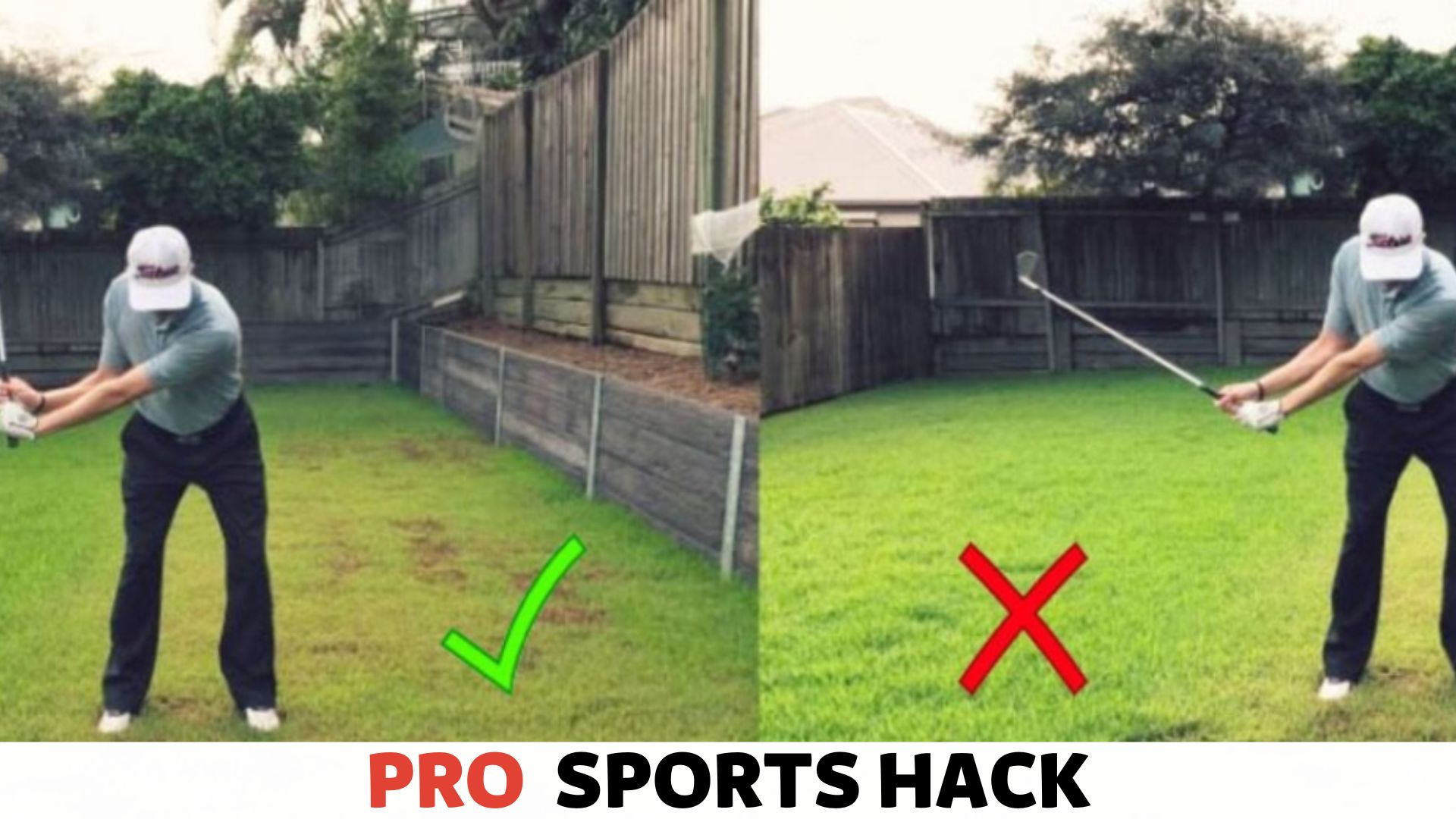
A golf cart transmission with reverse works by combining gears and hydraulic components to change the rotational speed and direction of the wheels. Golf cart transmissions with reverse enable the cart to move forward and backward by utilizing gears and hydraulic components.
These mechanisms alter the rotational speed and direction of the wheels, enabling the cart to maneuver in tight spaces or navigate uneven terrain.
Understanding how a golf cart transmission with reverse functions can help users operate the vehicle more effectively and ensure a smooth and efficient performance on the golf course or other recreational areas.
Whether a gas-powered or electric golf cart, the transmission system is a crucial component allowing for controlled and versatile movement, enhancing the overall driving experience for golfers and other users.
Understanding the Basics
Golf carts are not only a popular mode of transportation on golf courses, but they are also widely used in various settings such as resorts, neighborhoods, and college campuses.
Understanding how the golf cart transmission with reverse works can help you maximize your golf cart experience.
In this blog post, we will delve into the components of a golf cart transmission and provide an overview of how it functions.
Components of a Golf Cart Transmission
A golf cart transmission is a complex system comprising several important components working together to ensure proper operation. Let’s take a closer look at these components:
- Clutches: The clutches in a golf cart transmission are responsible for engaging and disengaging the engine’s power to the transmission system. They enable the transfer of power from the engine to the wheels.
- Gears: Gears play a vital role in determining the speed and torque of the golf cart. They transmit power from the engine to the wheels, providing different gear ratios for different driving conditions.
- Transmission Fluid: Just like in a car, transmission fluid is essential for lubricating the moving parts of the transmission, reducing friction, and cooling down the system. It also helps in transmitting power smoothly.
- Shafts: The transmission shafts connect various components of the transmission system and allow the power to be transferred from the engine to the wheels efficiently.
- Differential: The differential is a critical component in a golf cart transmission. It allows the wheels to rotate at different speeds while turning, ensuring smooth maneuverability.
Enhance your golfing adventures with our expert golf bag organization tips that promise a better and more enjoyable experience on the greens.
Overview of How a Golf Cart Transmission Works
Now that we have familiarized ourselves with the components let’s get an overview of how a golf cart transmission with reverse works:
- The engine provides power to the clutches, which engage and transfer power to the gears.
- The gears transmit the power from the engine to the transmission shafts.
- The transmission shafts transfer the power to the differential, which distributes it to the wheels.
- The wheels rotate at varying speeds depending on the gear ratio selected, allowing the golf cart to move forward or backward.
- When the reverse is engaged, the gears are shifted so that the wheels rotate in the opposite direction, causing the golf cart to move backward.
In summary, the golf cart transmission system enables power transfer from the engine to the wheels, allowing the cart to move forward or backward.
It consists of various components such as clutches, gears, shafts, and a differential, all working together seamlessly to provide efficient operation.
Understanding how the golf cart transmission with reverse works can help you appreciate the intricate mechanics of these vehicles, ensuring a smoother and more enjoyable ride.
Forward Motion: Power Transmission
In a golf cart, forward motion is achieved through a complex power transmission system. Understanding how this process works can help golf cart owners better maintain their vehicles and troubleshoot potential issues.
The golf cart transmission is at the core of this power transmission, which plays a crucial role in transferring power from the engine to the wheels.
Power Production in a Golf Cart
A golf cart typically runs on an internal combustion engine, usually gasoline or electricity. The engine is the key power producer, generating the energy needed to move the cart.
Gasoline-powered golf carts use a two-stroke or four-stroke engine, while electric golf carts rely on an electric motor.
Exploring the Role of the Engine in a Golf Cart
The engine in a golf cart acts as the main power source, transforming fuel or electricity into mechanical energy. This mechanical energy is harnessed to turn the wheels and propel the cart forward.
Gasoline engines ignite a mixture of fuel and air, generating expanding gases that create motion. On the other hand, electric motors rely on the flow of electric current to produce rotational force.
How Power is Transferred From the Engine to the Transmission
Once the engine generates power, it must be transferred to the transmission for further distribution. In a golf cart, this power transfer happens through a series of components, including a clutch, a drive belt, and a torque converter.
These components work together to seamlessly transmit power from the engine to the transmission.
The clutch between the engine and the transmission engages and disengages the power flow. The driver can control the cart’s speed and direction by connecting or disconnecting the engine’s rotational force from the transmission.
When the engine and transmission are engaged, power is transferred through the drive belt or torque converter, depending on the golf cart type.
Examining the Gearbox in a Golf Cart Transmission
The gearbox, or transmission, is a vital component in the power transmission system of a golf cart. It allows for the adjustment of gear ratios, enabling the golf cart to easily switch between different speeds.
The transmission receives power from the engine and delivers it to the wheels, allowing the cart to move forward or reverse.
The gearbox consists of several gears, each controlling a specific gear ratio. The driver can optimize the cart’s performance for different speeds and terrain conditions by shifting gears.
In addition to providing forward motion, the transmission facilitates the reverse function, allowing the cart to move backward when necessary.
Understanding the inner workings of a golf cart’s power transmission system, from the engine to the transmission, is key to maintaining optimal performance.
By properly caring for these components and addressing any issues promptly, golf cart owners can ensure the smooth operation and longevity of their vehicles.
Reverse Gear: The Key to Backing Up
Golf carts have become an essential mode of transportation on golf courses and in residential neighborhoods, resorts, and even industrial settings. These small vehicles are designed for efficiency, maneuverability, and ease of use.
One feature that makes them particularly versatile is their reverse gear, allowing them to move backward with ease, ensuring safety and convenience for the driver.
Introduction to the Reverse Gear in Golf Carts
Reverse gear is a crucial component in any golf cart’s transmission system. It enables the vehicle to move backward, allowing the driver to navigate tight spaces, reverse out of parking spots, or go in the opposite direction.
Understanding how the reverse gear works can shed light on its complex mechanics and how it contributes to the overall functionality of the golf cart.
Understanding the Purpose of Reverse Gear
The primary purpose of the reverse gear in a golf cart is to provide convenience and safety to the driver. Whether on the golf course or in a residential community, there are situations where it becomes necessary to move backward.
Without the reverse gear, drivers would be forced to make wide turns or perform complicated maneuvers to change direction. Including reverse gear simplifies this process, making it easy for golf cart drivers to navigate their surroundings efficiently.
Analyzing the Mechanism Behind Reversing in a Golf Cart Transmission
Reversing in a golf cart transmission involves a complex set of interlocking gears and shafts. When the driver shifts the gear lever to the reverse position, the transmission system engages a specific gear ratio that allows the golf cart to move backward.
This gear ratio counteracts the rotation of the drive wheels, effectively reversing the vehicle’s direction.
Additionally, the reverse gear is designed to engage only when the golf cart comes to a complete stop. This safety measure ensures that the reverse gear is not accidentally engaged while the cart is still in motion, preventing potential accidents.
Dive into the specifics of golf bag organization as we guide you through the step-by-step process of efficiently organizing a 4-slot golf bag, optimizing your equipment for peak performance.
Exploring the Role of the Clutch in Reverse Gear
A critical component in the reverse gear mechanism is the clutch. The clutch is responsible for transmitting power from the engine to the transmission, allowing for smooth gear changes and efficient power delivery.
When the reverse gear is engaged, the clutch disengages the engine’s power from the transmission, allowing the gears to switch to the appropriate reverse gear ratio. This disengagement prevents the golf cart from moving forward while the reverse gear is engaged, ensuring a seamless transition from forward to backward motion.
Once the transmission has successfully shifted into the reverse gear, the clutch re-engages the engine’s power, transferring it to the reverse gears and enabling the golf cart to move backward.
This coordinated action of the clutch and reverse gear ensures a smooth and controlled reverse motion without jarring or abrupt movements.
The reverse gear is truly the key to backing up in a golf cart. It offers drivers the convenience and safety they need to navigate their surroundings easily.
By understanding the purpose and mechanism of the reverse gear, drivers can appreciate the engineering marvel that makes reverse motion in golf carts possible.
Operating the Transmission
Proper operation of the golf cart transmission is crucial for a smooth and efficient ride. Understanding how to engage and disengage the transmission, as well as how to shift gears, will ensure that your golf cart functions optimally.
In this section, we will explore the methods of engaging and disengaging the transmission, how shifting gears in a golf cart works, and the importance of proper shifting techniques.
Methods of Engaging and Disengaging the Transmission
Engaging and disengaging the transmission in a golf cart can vary depending on the make and model. However, there are two common methods used:
- Electric switch: Some golf carts feature an electric switch that allows you to engage and disengage the transmission with a simple flick of a button. This method is convenient and user-friendly.
- Manual lever: Other golf carts utilize a manual lever near the driver’s seat. You can engage or disengage the transmission by pulling or pushing the lever. This method requires a bit more effort but is still relatively straightforward.
Regardless of the method used, it is important to follow the manufacturer’s guidelines for engaging and disengaging the transmission to ensure proper golf cart operation.
How Shifting Gears in a Golf Cart Works
Unlike traditional automobiles, golf carts usually have a limited number of gears, commonly two or three. Shifting gears in a golf cart works by adjusting the ratio of the drive system to accommodate different speeds.
Here is a general overview of how it works:
- Start with the golf cart in neutral. This ensures that the transmission is disengaged and the cart is not moving.
- Depending on the model, you may need to depress the acceleration pedal slightly to shift gears.
- Shift into the desired gear by moving the lever or pressing the appropriate button.
- Release the acceleration pedal slowly to allow the transmission to engage and the golf cart to start moving.
- To shift to a higher gear, release the acceleration pedal completely and follow the same process again.
It is essential to refer to the owner’s manual or manufacturer’s instructions for specific details regarding shifting gears in your particular golf cart model.
The Importance of Proper Shifting Technique
Using the correct shifting technique is vital to preserve the longevity of your golf cart’s transmission and ensure a smooth ride. Here are some key points to keep in mind:
- Shift gears smoothly and gradually to avoid putting strain on the transmission.
- Do not shift gears while the golf cart is in motion. Make sure to come to a complete stop before shifting.
- Never force the transmission into a gear if it is not engaging easily. This could cause damage to the transmission.
- Pay attention to any unusual noises or resistance when shifting gears and address them promptly to prevent further issues.
- Regularly maintain your golf cart’s transmission, including checking fluid levels, to keep it in optimal condition.
By following these guidelines and practicing proper shifting techniques, you can ensure the smooth and reliable operation of your golf cart’s transmission.
Maintaining and Troubleshooting
Regular maintenance and servicing are crucial for keeping your golf cart transmission running smoothly. By ensuring proper care and addressing any issues promptly, you can extend the lifespan of your transmission and avoid costly repairs.
This section will discuss the importance of regular maintenance, common transmission issues, and troubleshooting tips to help keep your golf cart transmission in top condition.
Regular Maintenance and Servicing of Golf Cart Transmissions
Like any other mechanical component, your golf cart transmission requires regular maintenance to function optimally. By following these maintenance tips, you can minimize the risk of transmission problems:
- Change transmission fluid: Regularly changing the transmission fluid is vital for lubrication and cooling. Refer to your golf cart manufacturer’s guidelines for the recommended frequency.
- Inspect seals and gaskets: Inspect the transmission seals and gaskets for any signs of leakage. Replace any damaged or worn-out seals promptly to prevent fluid loss.
- Clean and inspect filters: Clean or replace the transmission filter, as dirt and debris can accumulate over time, hindering the transmission’s performance. Regular filter maintenance ensures smooth, fluid flow and prevents clogs.
- Check for leaks: Routinely inspect your golf cart transmission for any signs of leaks, including fluid spots underneath the cart. Addressing leaks promptly can prevent damage to the transmission and other components.
- Tighten loose bolts and connections: Check for any loose bolts or connections in the transmission system. Tighten them as needed to prevent further damage or malfunction.
Common Transmission Issues and How to Troubleshoot Them
Despite regular maintenance, transmission issues may still occur. Here are some common problems golf cart owners may encounter and troubleshooting tips:
| Issue | Troubleshooting Tips |
|---|---|
| Slipping transmission | Check the reverse switch or solenoid if your golf cart transmission gets stuck in reverse. Ensure they are functioning correctly and replace them if necessary. |
| Strange noises | Unusual noises like clunking or whining could indicate internal problems. Have a professional mechanic inspect the transmission to determine the cause and perform any necessary repairs or replacements. |
| Stuck in reverse | If your golf cart transmission gets stuck in reverse, check the reverse switch or solenoid. Ensure they are functioning correctly and replace them if necessary. |
| Failure to shift gears | Check the shift linkage or cable for any obstructions or damage. Cleaning, lubricating, or replacing the linkage or cable can help resolve shifting issues. |
Tips for Prolonging the Lifespan of a Golf Cart Transmission
To ensure the longevity of your golf cart’s transmission, consider the following tips:
- Drive with care: Avoid abrupt starts and stops, as they can stress the transmission unnecessarily.
- Don’t overload the cart: Stick to the manufacturer’s weight capacity recommendations to prevent strain on the transmission.
- Regularly clean the cart: Removing dirt and debris from the cart, including the transmission area, can prevent contaminants from entering and causing damage.
- Store the cart properly: If you plan to store your golf cart for an extended period, follow the manufacturer’s guidelines for proper storage, including preparing the transmission.
- Follow servicing intervals: Adhere to the manufacturer’s recommended servicing intervals for comprehensive inspections and maintenance.
By implementing these practices, you can maximize the lifespan of your golf cart transmission and enjoy smooth rides on the golf course or around the neighborhood.
Maximize the performance of your golf cart with our comprehensive guide on how to align golf cart tires, ensuring a smooth ride and improved maneuverability on the golf course.
Frequently Asked Questions
How Does Golf Cart Reverse Work?
The golf cart reverse uses an electric motor to spin the wheels in the opposite direction. This allows the cart to move backward, providing a convenient way to navigate tight spaces on the golf course or any other area where golf carts are used.
How Does an Electric Golf Cart Go in Reverse?
An electric golf cart goes in reverse by using a reverse switch, which changes the direction of the electric motor.
How Does Forward and Reverse Work on a Golf Cart?
Forward and reverse on a golf cart are controlled by a transmission system. When you push the pedal forward, it engages the forward gear, propelling the cart forward. To go in reverse, you push the pedal backward, which activates the reverse gear and moves the cart in the opposite direction.
How Does a Forward Reverse Gearbox Work?
A forward-reverse gearbox allows you to change the direction of the output shaft. It works by utilizing a combination of gears and shifting mechanisms. When in forward mode, power is transmitted from the input shaft to the output shaft, while in reverse mode, the gears are engaged differently to reverse the direction of rotation.
How Does a Golf Cart Transmission With Reverse Work?
A golf cart transmission with reverse operates using a combination of gears and a control system that allows the driver to switch between forward and reverse movement.
Conclusion
To sum up, understanding how a golf cart transmission with reverse works is essential for any golfer or enthusiast. It ensures smooth and efficient movement on the course, allowing for seamless navigation and maneuverability. Whether using a mechanical or electric transmission, the aim is to provide an effortless driving experience.
So, next time you hop onto a golf cart, appreciate the intricate mechanism that allows you to cruise around the green effortlessly.




![Cat in the Chrysalis Spoiler: All You Need To Know [Updated] Cat in the Chrysalis Spoiler](https://prosportshack.com/wp-content/uploads/2024/02/Cat-in-the-Chrysalis-Spoiler-100x75.jpg)














